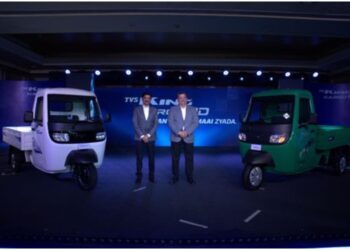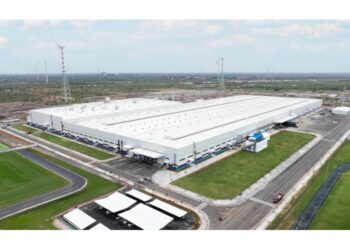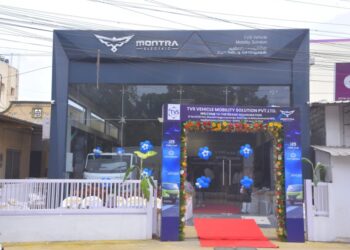Increased consumer demand for sustainable vehicle options and policy evolutions have driven China’s automotive industry participants to intensify their efforts on electrification, according to KPMG‘s latest research report. As part of the fourth KPMG China Leading Autotech 50 initiative, a list of China’s leading and emerging autotech innovators in electrification has been released today along with the report.
This report on electrification, titled Sinocharged: The bright future of China’s electric vehicle market, highlights how the new energy vehicle (NEV) market in China has changed over the past year and summarises trends in three major areas of electrification, namely original equipment manufacturers (OEMs), the battery value chain and electric vehicle (EV) charging. The report analysis integrates observations from KPMG partners involved in the auto industry, as well as input from in-depth interviews from senior management of some of China’s most innovative automotive start-up companies.
In 2020, China saw a dramatic shift within the NEV market, from being historically supply and policy driven to revealing more characteristics of a demand-driven marketplace, as more consumers put emphasis on an environmentally friendly lifestyle and demand sustainable vehicle options. In addition, there have been changes in the stance by regulators. For instance, China pledged to become carbon-neutral by 2060, partly via the electrification of transportation.
Norbert Meyring, Partner, Head of Automotive Sector at KPMG China, says: “We are in the midst of an auto industry evolution fusing electrification, mobility, service innovation and connectivity. Not only are the new generation of start-up OEMs successfully selling NEVs, but traditional OEMs are acting on their commitments to launch their own NEV products. As a result, China and major automotive nations are witnessing the beginning of a vibrant NEV market.”
China’s NEV market has been dominated by domestic manufacturers who have had more than a combined 80 percent market share in recent years, while traditional foreign OEMs have taken a more conservative pace towards electrification. However, given the government support, infrastructure improvements and closing production cost gap between NEV and internal combustion engine (ICE), foreign OEMs are keen to expand their NEV product offering. Going forwards, they are expected to gain market share in the NEV segment via their Chinese joint ventures.
The overall combined vehicle market size will likely not grow fast enough to match the sales targets of all the OEMs, so market consolidation is inevitable. “Market leadership changes will be ongoing, but since traditional OEMs are now more serious about electrification, competition will become more intense both locally and globally,” says Gary Xu, Partner, Mergers and Acquisitions, KPMG China.
NEV affordability remains a key value proposition, and since the battery is the major cost item for NEVs, OEMs that can develop or source better-quality batteries would have an edge versus their peers. China has been securing access to the major material resources to make NEV batteries and is a forerunner in the materials processing industry. Despite the entry of some global battery suppliers, it is unlikely that foreign suppliers can gain more share in future since more global OEMs are tying up with local suppliers. “Leading Chinese NEV battery suppliers, along with other major Asia suppliers in Japan and Korea, will continue to be the leaders in the global supply chain considering their strong market position,” says Miguel Montoya, Partner, Deal Advisory, KPMG China.
In terms of challenges, insufficient charging infrastructure has always been a key setback in consumers’ desire to switch to NEVs. To catch up with the growth of NEV ownership in the future, the growth pace of charging pile counts will only speed up given the current insufficiency. This creates opportunities backed by the Chinese government’s support for charging network expansion.
While major operators have begun to collaborate to improve pile availability information, the benefits of a connected charging pile network go beyond that. Besides collecting vehicle charging data and electricity usage data, a smart connected charging pile network can also provide NEV usage data such as driving and charging habits. The big data obtained from the NEV fleet in occasions like charging can also reveal valuable details of the lifestyles of NEV owners.
“Charging pile utilization is usually low and efficiency/profitability cannot be enhanced by only analyzing simple charging data. But if combined with data on NEVs’ conditions and usage patterns, more customized value-added services such as car care and shopping can be offered to NEV owners, thus making the charging network a more valuable habitat,” comments Phil Yu, Partner, Management Consulting, KPMG China.
China has been the world’s largest NEV market by sales volume since 2015 and is expected to maintain that position for years to come. To address challenges from industry pioneers like Tesla and other NEV start-ups, many traditional domestic OEMs have adopted a new business model to help foster new thinking or decision processes while also allowing more possible collaborations with external parties. Luther Kang, Partner, Automotive Strategy, KPMG China, also says: “Nowadays traditional domestic OEMs are launching their latest NEV products under separate brands, in some cases under a stand-alone business entity. OEMs are taking a similar approach with their NEV subsidiaries. Standalone identities simplify strategic investments by and cooperation with external parties.”
Looking ahead, Chinese and global NEV demand and fleet size will continue to grow rapidly due to government support, OEMs’ increasing commitments and further NEV adoption by car owners, according to the report. The wider use of NEVs will also create a new ecosystem from the traditional ICE value chain, in areas such as NEV-specific components, charging and peripheral services, and other big data applications, and creates new business opportunities for young auto tech companies. “They are participating in the NEV industry at the right time and in the right place. As the industry is still evolving, there are still opportunities for technology disruptors for both products and services,” Meyring concludes.
Remarks: KPMG will release the complete China Leading Autotech 50 list around mid-2021. The complete list will cover four major areas, namely electrification, mobility, service innovation, and connectivity.













